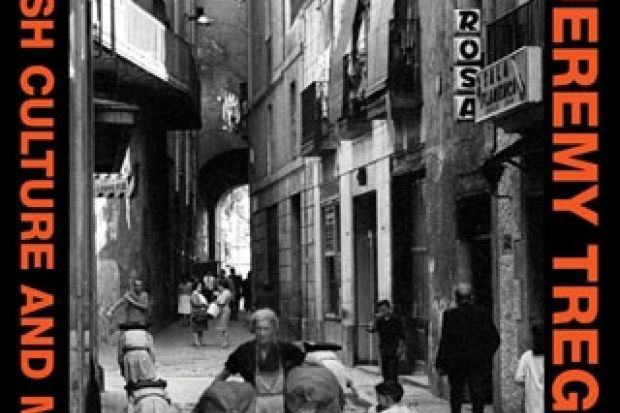Travelogues about Spain have a long trajectory, taking in not only the work of 19th- and early 20th-century writers such as Prosper Mérimée and George Orwell but also 21st-century accounts such as Giles Tremlett’s Ghosts of Spain: Travels Through a Country’s Hidden Past. Jeremy Treglown stakes his place in this tradition with an ambitious study of seven decades of Spanish “culture and memory”.
One of the challenges for authors of travelogues is how to best locate themselves as they interpret “alien” cultures for people “at home” and deploy analogies appropriate to both places. In Franco’s Crypt, a work largely aimed at a British audience interested in Spain, Treglown keeps his audience in mind, as is obvious not only from the book’s content but in his comparisons of the Bachillerato to A levels, and Franco’s role in the 1934 Asturias rebellion to Lord Kitchener’s in the First World War.
Treglown’s interplay of history with personal narratives is skilful and incisive. Equally perceptive is his illustration of the ways artists and writers were able to circumvent the constraints of censorship during the 36 years of Franco’s dictatorship. Indeed, his book amply demonstrates that “any notion that Franco’s Spain was an artistic desert is the opposite of the truth”.
He begins with the “recovery of historical memory” and the digging up of mass graves in the search for relatives killed extra-judicially during or after the 1936-39 Civil War. Since these activities have been politicised by both sides of the political spectrum, Treglown adopts the salutary perspective of an outsider. This is welcome in a partisan field, even if impartiality is something to be aimed for rather than achieved. However, such a perspective can also have the effect of locating authors above their subject, and give the impression that personal views are universal truths. Treglown does so when he avows, for example, that a village is “perfectly viable” or that the Valley of the Fallen housing Franco’s mausoleum and its surroundings “offer opportunities that Spain must now take”. In the same vein, he classes Land and Freedom, Ken Loach’s 1995 film drama about a British leftist fighting on the Republican side, as “peremptorious” and reduces Spanish anarcho-syndicalism to “the simultaneously perfectionist and defeatist idea of the nineteenth-century Russian thinker Bakunin”.
The book’s first half, “Sites and sights”, explores the building of dams and the construction by political prisoners of the infamous Valley of the Fallen in the Guadarrama mountains. This section also offers an engaging summary of Spain’s history wars, for which Treglown relies on Antony Beevor’s work, while showing familiarity with the scholarship of Spanish historians such as Santos Juliá and Javier Tusell. Perhaps the book’s most innovative segment is Treglown’s scrutiny of the multi-volume Diccionario Biográfico Español produced by Spain’s Royal Academy of History. Arguing that the work is a “microcosm for the country”, he calls the academy’s view of history “an exclusive form of social mummification”.
The cultural analyses in the book’s second half, “Stories and histories”, survey mostly literary and cinematic productions, with a few references to sculpture, painting and music. Treglown’s broad selection means that references move swiftly from, say, Pedro Almodóvar’s Volver (2006) to Victor Erice’s Spirit of the Beehive (1973) and to Raza, the 1942 cinematic treatment of a novel by Franco. Although here Treglown argues that “cultural memory has no point if it recuperates only half the past”, his claim is somewhat undermined by the small proportion of right-wing artists and writers he considers. Moreover, some of those, such as Wenceslao Fernández Flórez or Agustín de Foxá, might just as easily be forgotten, and not simply on account of their extreme political views.
Franco’s Crypt concludes with a return to the countervailing desires to remember and to forget. Treglown sums this up with reference to Marina, a woman to whom we are introduced early in the book, and her unsuccessful search for her great-grandfather’s remains. When contacted by the writer, she said she “did not want to talk about the past”. This was, he surmises, because her grandmother had died unexpectedly and, more importantly, because she had just had her first child. Humans, Treglown reminds us, negotiate present and future, even when the ghosts of the past come back to haunt the living.
Franco’s Crypt: Spanish Culture and Memory Since 1936
By Jeremy Treglown
Chatto and Windus, 336pp, £25.00
ISBN 9780701180621
Published 6 March 2014
Register to continue
Why register?
- Registration is free and only takes a moment
- Once registered, you can read 3 articles a month
- Sign up for our newsletter
Subscribe
Or subscribe for unlimited access to:
- Unlimited access to news, views, insights & reviews
- Digital editions
- Digital access to THE’s university and college rankings analysis
Already registered or a current subscriber? Login





